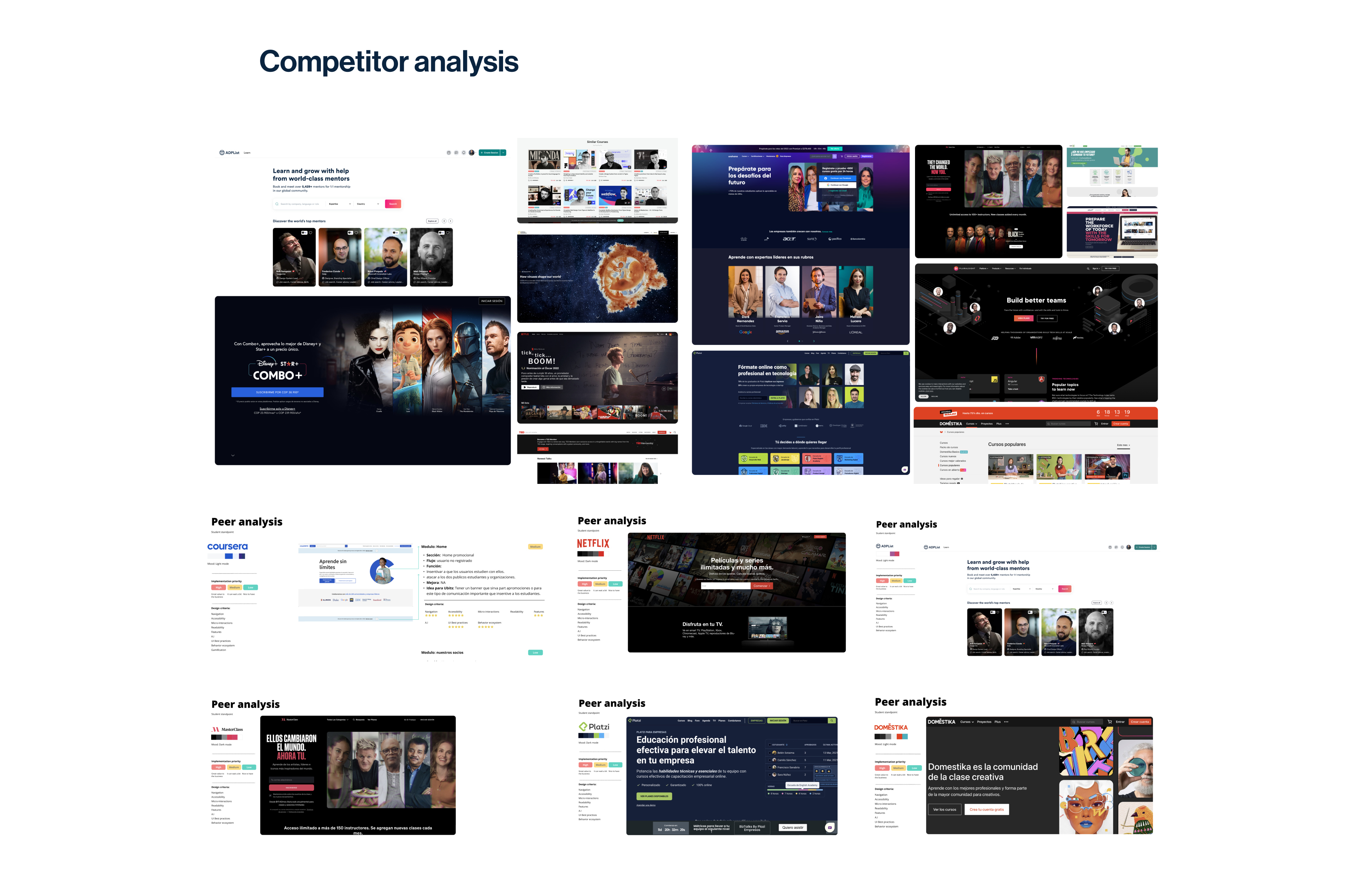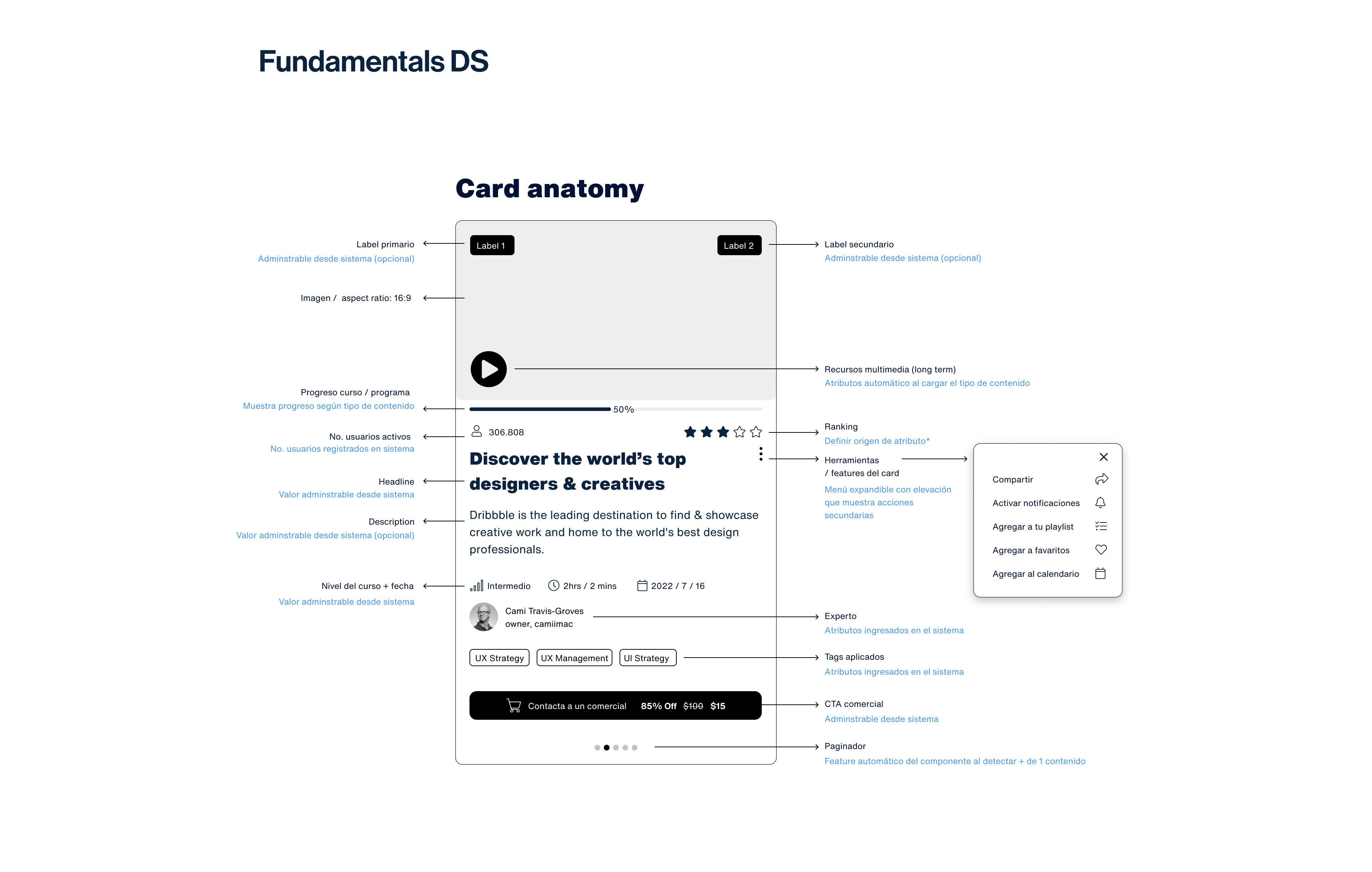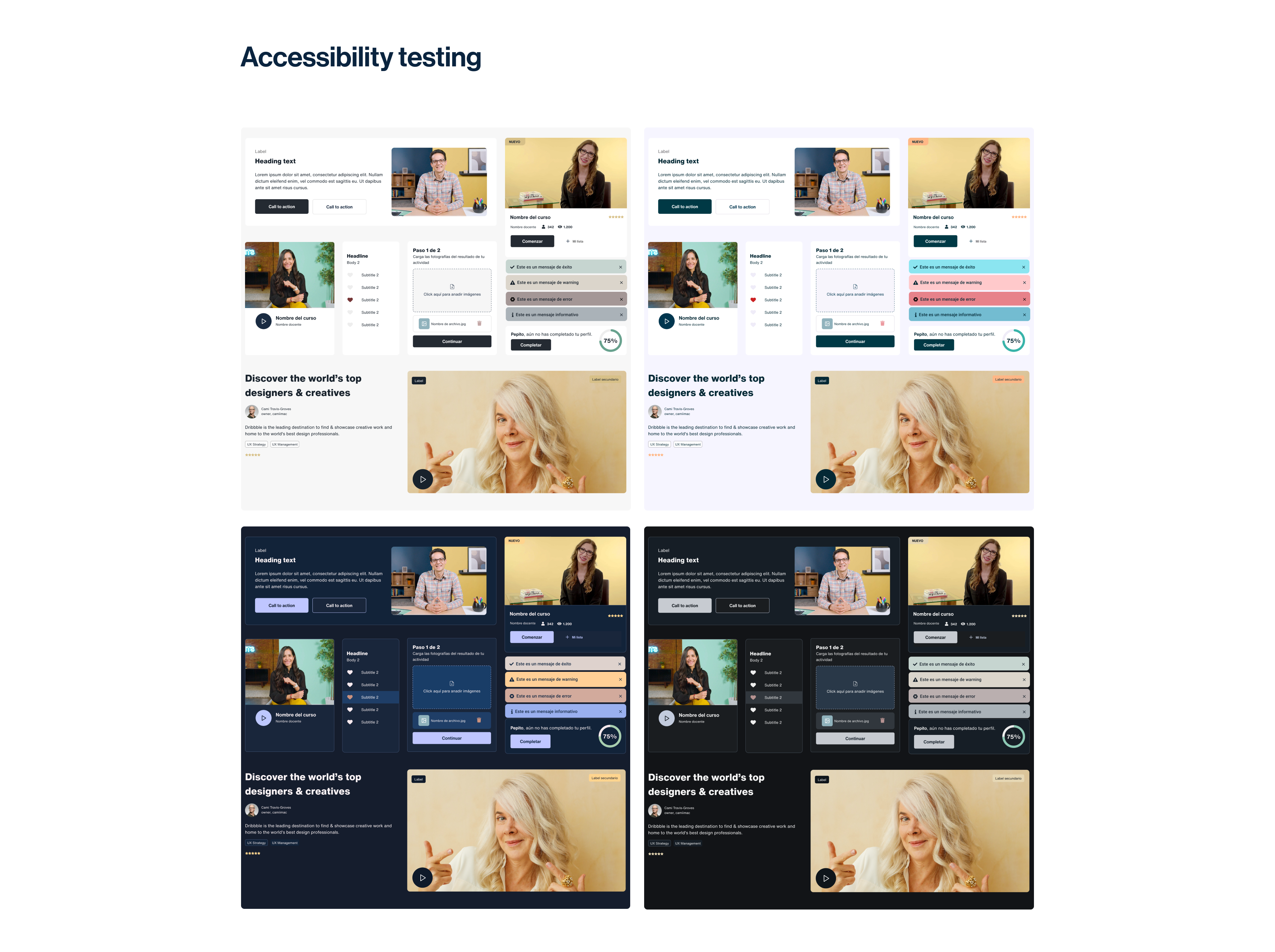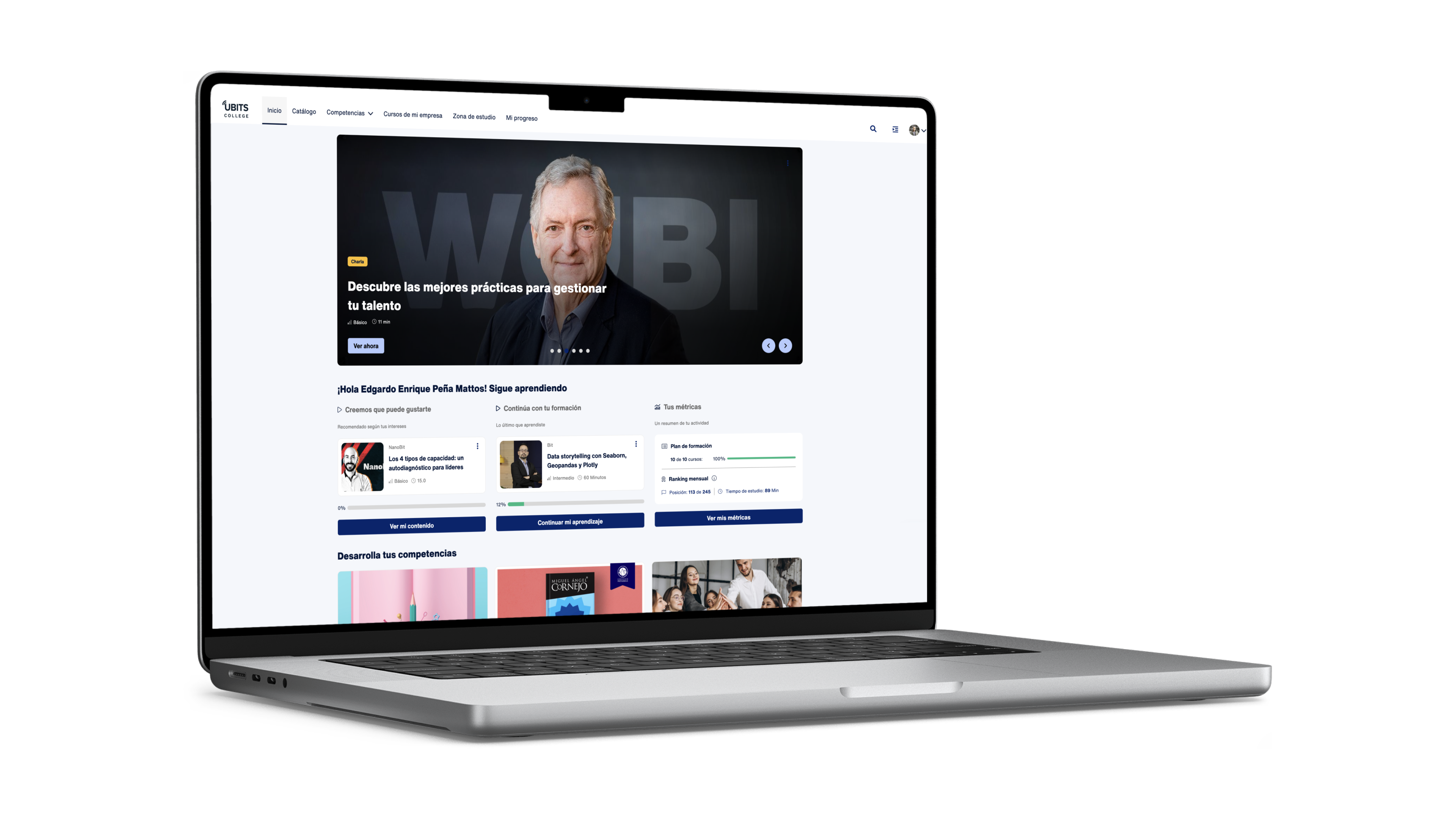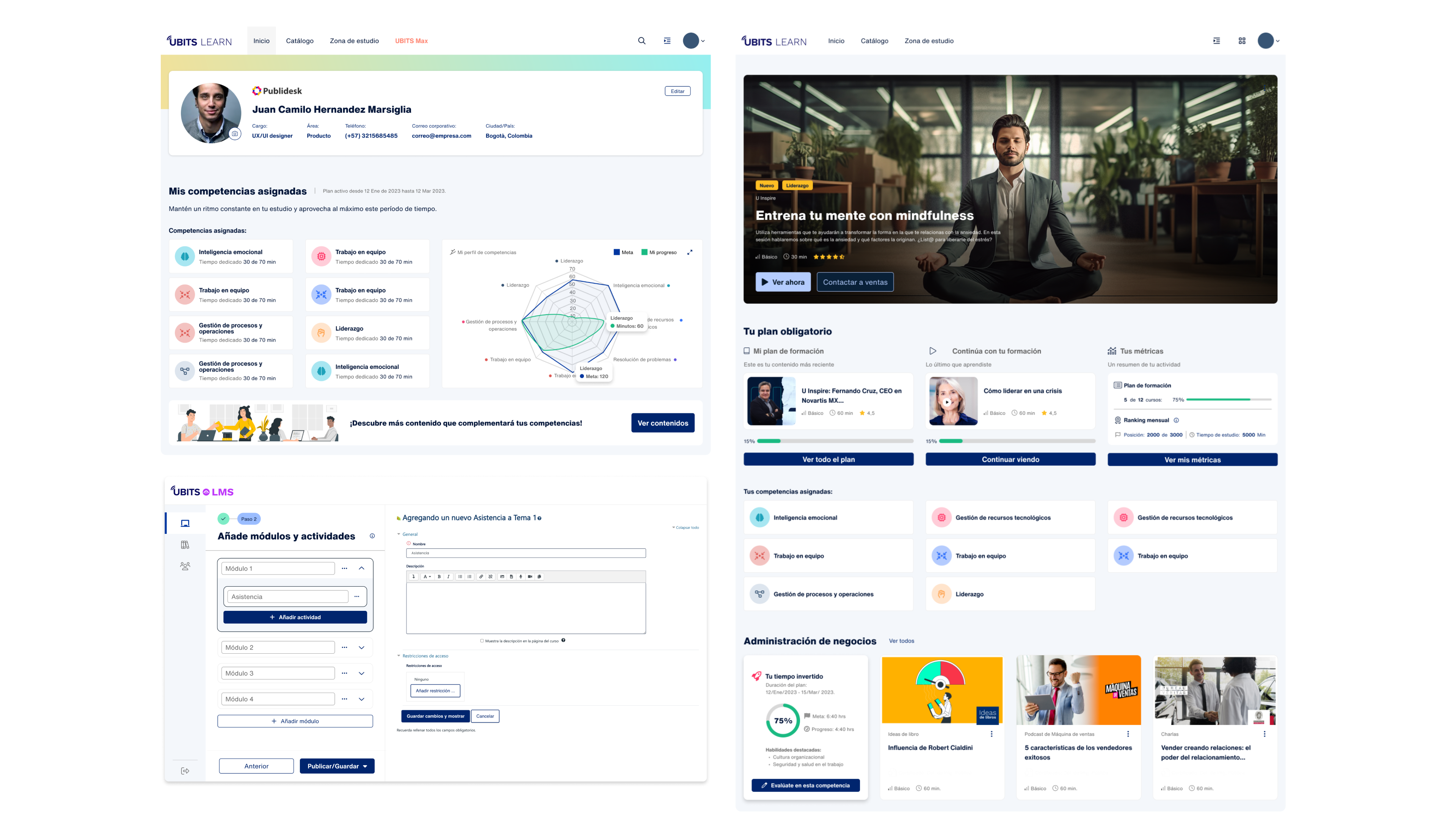Why did we do this?
Due to the company’s rapid growth, it was necessary to consider a more robust B2B study platform based on experience. A significant dependence on Moodle as a learning management system (LMS) made it challenging to create new features to meet customer needs. In addition, the entire design was thought out from an engineering perspective, and many gaps in experience caused customer frustration to expand.

What was the challenge?
The design and consumer experience towards end customers had to be rethought entirely. Because the design was thought out by engineering and there was no UX team, immediate actions had to be taken to strengthen a higher-quality product.
Among the most significant challenges to be resolved were:
- Creation of product value proposition
- Redefinition of the current user’s profile
- Creation of a design system
- Incremental improvements in interface and interactions.
Obstacles
- Platform not designed to be scalable in the short term
- Weak modeling of users and their behaviors.
- Design and experience inconsistencies throughout the product
- Nonexistent mobile experience
Opportunities
Due to the impact that we want to achieve in the new product, the perfect scenario was created to implement good experience design practices such as:
- A better understanding of the EDTECH market and its challenges
- Redefine our audience to be more assertive in our solutions
- Define a more robust product and design strategy
- Definition of purposes by sections and structural analysis of components.
Design Understanding
By the time this project was started, it was essential to understand the EDTECH market and its nuances, needs, and types of users well. Several investigations showed us that the work had many intrinsic challenges, such as the desire to study not being prevalent in the general population and often associated with an obligation distanced from natural enjoyment, especially in Latin America. This truth prompted us to look for new ways to attract and retain users from a more interesting perspective that is not so close to the traditional way.
Communication strategies (interface and conventional) and direct interaction with the user were proposed to change the mindset that studying is dull and without any benefit to achieve the design goal.
Design Solution
We divide the results from several fronts:
- Definition of the value of the new product and creation of interaction regions for users
- Understanding and application of content card anatomy
- Accessibility standards for all users with visual limitations.
- Measurement and co-creation strategy with users to maintain exponential value growth.
What I learned from this project
Designing a product is always an important decision. Many factors must be taken into account that may affect it, especially for users who are already accustomed to some type of experience.
Some aspects to consider when redesigning a product are:
- Do not change or affect user settings that already work for users.
- You can focus on improving things that were not performing the best.
- Do not redesign for simple reasons. A visual change is necessary but should not be the most crucial reason for the change.
- You can just build on the value you already offer and improve it.
